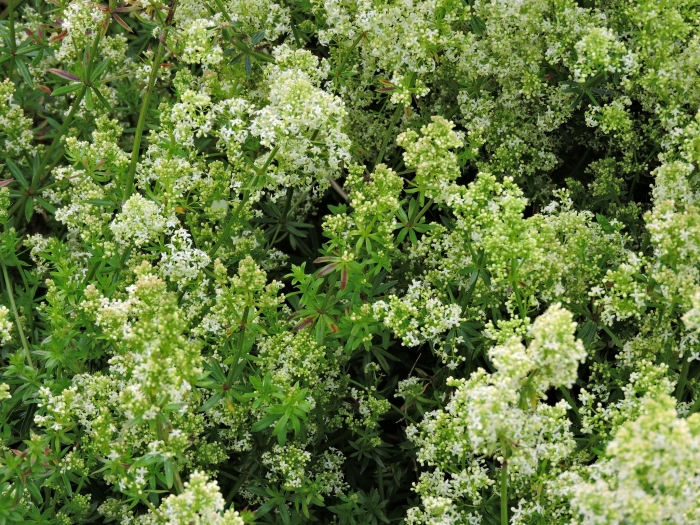Hedge Bedstraw
(Galium mollugo)
Hedge Bedstraw (Galium mollugo)
/
/

Susan Marley
CC BY 4.0
Image By:
Susan Marley
Recorded By:
Copyright:
CC BY 4.0
Copyright Notice:
Photo by: Susan Marley | License Type: CC BY 4.0 | License URL: http://creativecommons.org/licenses/by/4.0/ | Rights Holder: Susan Marley | Publisher: iNaturalist | Date Created: 2020-06-09T15:40:41-07:00 |






Estimated Native Range
Summary
Galium mollugo, commonly known as Hedge Bedstraw or False Baby’s Breath, is an herbaceous perennial native to a variety of habitats including grasslands, meadows, open woodlands, and forest edges across Europe, Asia, and North Africa. It has also naturalized in parts of North America and Asia. This plant typically grows to a height of 2 to 4 feet (0.6 to 1.2 meters) and spreads to about 3 feet (0.9 meters) wide. Hedge Bedstraw features small, star-shaped, white flowers that bloom in dense clusters from late spring to mid-summer, which are moderately showy and can add a frothy texture to garden borders.
Hedge Bedstraw is valued for its ability to form a dense ground cover, suppressing weeds and stabilizing soil. It is often used in wildflower meadows, borders, and informal garden settings. It thrives in well-drained soil, prefers full sun to part shade, and requires moderate watering. While it is generally low-maintenance, it can become aggressive in some conditions, spreading rapidly by rhizomes and potentially outcompeting native species. It is important to monitor its growth and manage its spread to prevent it from becoming invasive.CC BY-SA 4.0
Hedge Bedstraw is valued for its ability to form a dense ground cover, suppressing weeds and stabilizing soil. It is often used in wildflower meadows, borders, and informal garden settings. It thrives in well-drained soil, prefers full sun to part shade, and requires moderate watering. While it is generally low-maintenance, it can become aggressive in some conditions, spreading rapidly by rhizomes and potentially outcompeting native species. It is important to monitor its growth and manage its spread to prevent it from becoming invasive.CC BY-SA 4.0
Plant Description
- Plant Type: Herb
- Height: 2-3 feet
- Width: 1-1.5 feet
- Growth Rate: Moderate
- Flower Color: White
- Flowering Season: Summer
- Leaf Retention: Deciduous
Growth Requirements
- Sun: Full Sun, Part Shade
- Water: Medium
- Drainage: Medium, Fast
Common Uses
Low Maintenance
Natural Habitat
native to a variety of habitats including grasslands, meadows, open woodlands, and forest edges across Europe, Asia, and North Africa
Other Names
Common Names: Hedge Bedstraw, Stickywilly
Scientific Names: , Galium mollugo, Galium flaccidum, Galium mollugo f. congesta, Galium mollugo subsp. elatum, Galium mollugo subsp. elatum, Galium mollugo subsp. erectum, Galium mollugo subsp. gerardii, Galium mollugo var. angustifolium, Galium mollugo var. elatum
GBIF Accepted Name: